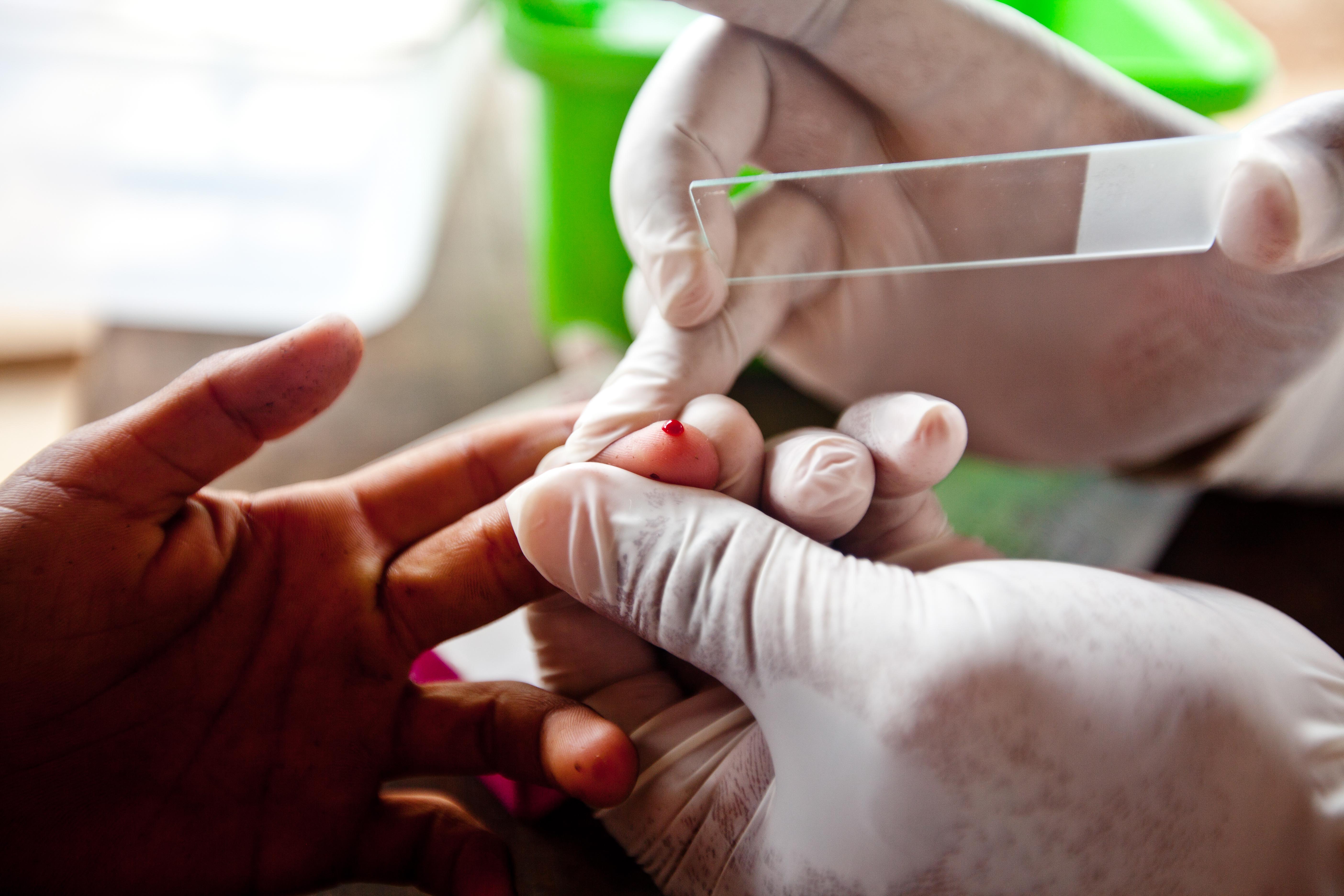Parasite Clearance Study Group
Parasite Clearance Study Group

A pooled analysis of parasite clearance data after treatment with an artemisinin derivative, either alone or in combination with other antimalarials (ACTs).
Results from the Parasite Clearance Study Group provide insight into accurately estimating parasite clearance half-life after treatment with artemisinin derivatives by amending sampling schedules. Sampling more than twice a day is recommended in locations where P. falciparum is sensitive to artemisinin derivatives or where susceptibility is unknown.
Two studies were published: Optimal sampling designs for estimation of Plasmodium falciparum clearance rates in patients treated with artemisinin derivatives in November 2013 and Baseline data of parasite clearance in patients with falciparum malaria treated with an artemisinin derivative: an individual patient data meta-analysis in September 2015.
The results were derived from the analysis of 13 studies in which patients were treated with artesunate alone or in combination with a partner drug. In total 2,746 patients with parasite densities measured every six hours were included in the analysis.
Further analysis of available data was carried out to provide reference parasite clearance estimates stratified by location, treatment and time; to examine host factors affecting parasite clearance, and to assess the relationships between parasite clearance and risk of recrudescence during follow-up.
Analysis of baseline parasite clearance data per study location, year and treatment. Data from 24 studies, conducted between 1996 and 2013, with 6,975 patients with frequent parasite counts were included in this analysis. Manuscript entiltled “Baseline parasite clearance data in uncomplicated falciparum malaria after treatment with an artemisinin derivative alone or in combination” was submitted to Malaria Journal in mid-February 2015.
The call for participants in the Parasite Clearance Study Group was opened in December 2011. Research groups that have published relevant clinical studies were invited to join the study group from January 2012. The Study Group closed to new participants in May 2013.
Parasite clearance is considered to be the most robust measure of antimalarial effect and is postulated to be a key component of the definition of emerging resistance. The dynamics of parasite clearance following artemisinin treatment are influenced by a number of factors other than parasite susceptibility including host immunity, initial parasite biomass and partner drug efficacy. It is critically important to control for such potential confounding factors to identify changes over time in parasite clearance due to reduced parasite susceptibility.
We are analysing parasitaemia data collected at least every 12 hours from individual patients who participated in completed studies. The recently developed WWARN Parasite Clearance Estimator1 is being used to produce standardised parasite clearance estimates. These can be compared between studies to identify changes or trends in clearance that may signal emerging artesunate resistance with artemisinin combination therapy (ACT) or artesunate monotherapy. Such analyses will provide a valuable reference or baseline data for malaria researchers and decision makers managing malaria control programmes.
- Provide reference parasite clearance estimates stratified by location, treatment, study population and date
- Examine host and parasite factors affecting parasite clearance
- Patients with uncomplicated P. falciparum malaria enrolled prospectively in clinical trials of any ACTs or artemisinin monotherapy; and,
- Peripheral parasitaemia measured at least every 12 hours in the first three days after treatment.
- Serial parasite counts recording date and time of measurement until parasite clearance; negative parasitaemia should be recorded as zero;
- Enrolment date;
- Patient age;
- Treatment including full details of dosing and timing of drug administration;
- Study location and characteristics; and,
- Details of parasite counting method.
- Any clinical covariates collected at baseline including fever clearance, haematological measures, and gametocyte numbers
- Data on drug vomiting and patient adherence
- Clinical treatment outcomes including recurrent parasitaemia during follow up and PCR results for adjustment of reinfections
- Any pharmacological assessments
More details about WWARN Study Groups, sharing data with WWARN and how WWARN will use data are available on the WWARN website. WWARN has standardised uploaded data sets according to the WWARN Clinical Data Management and Statistical Analysis Plan. Data sets have been pooled into a single database of quality-assured individual patient data.
A full Statistical Analysis Plan (SAP) was developed and approved by the Study Group to include:
- Summary of parasite clearance estimates (calculated using the WWARN Parasite Clearance Estimator and other analytical tools) stratified by location, treatment drug, study population and date of enrolment;
- Identification of clinical baseline characteristics associated with variation of parasite clearance;
- Identification of other clinical characteristics during treatment associated with variation of parasite clearance – such as drug vomiting, treatment dose, administration of partner drug; and,
- Analysis of the relationship between parasite clearance measures and other outcome measures of treatment efficacy including risk of recrudescence, gametocyte carriage rates, haematological recovery and fever clearance, will also be undertaken.
The Study Group comprised participating investigators who contributed relevant data sets to the pooled analysis. Data sets remain the property of the investigator. The Study Group was led by Dr Kasia Stepniewska.
For further information, email Kasia Stepniewska kasia.stepniewska@wwarn.org
WWARN Parasite Clearance Study Group. Optimal sampling designs for estimation of Plasmodium falciparum clearance rates in patients treated with artemisinin derivatives. Malar Journal. November 13, 2013.
WWARN Parasite Clearance Study Group. Baseline data of parasite clearance in patients with falciparum malaria treated with an artemisinin derivative: an individual patient data meta-analysis. Malaria Journal 2015. September 22, 2015.

